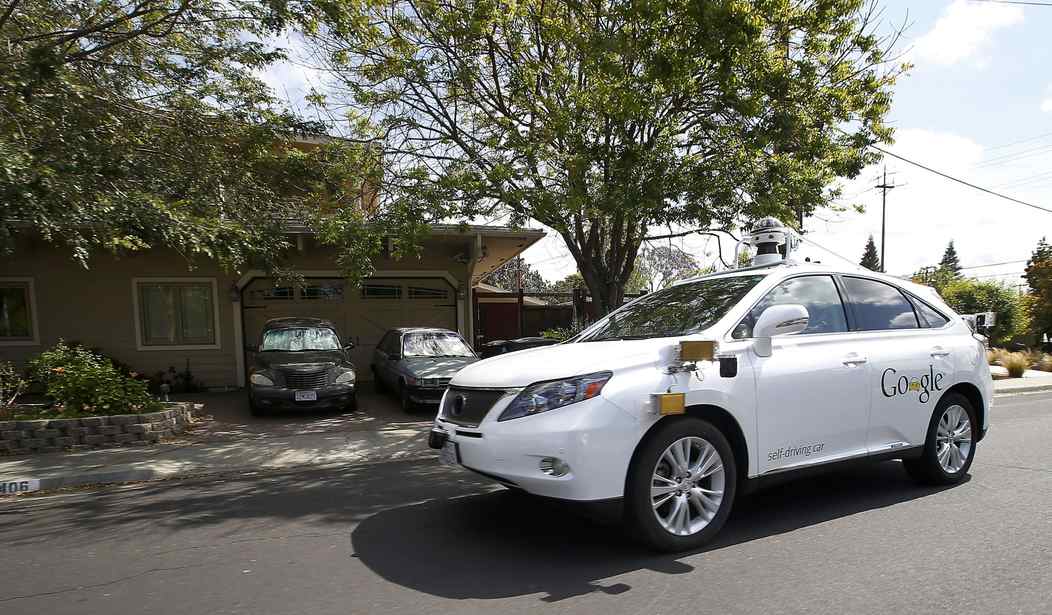The Google-Fiat Chrysler Automobiles partnership to put autonomous technology into 100 Chrysler Pacifica Hybrid minivans should bring mainstream America into the autonomous vehicle (AV) revolution.
Minivans move families. If Google can make its self-driving technology work in a minivan like the Pacifica Hybrid, it can sell the idea to Mom and Pop America that AVs are safer, easier, and better than keeping their hands at 9 and 3 on the steering wheel.
If Mom and Pop buy into this proposition, it will change all of our lives.
Safety
This could be self-driving technology’s most dramatic impact on our lives. Google’s autonomous test cars have an outstanding safety record. And who doesn’t need a safer vehicle than a parent with a minivan load of kids?
Virginia Tech researchers released a study in February 2016 that showed those of us who drive the old fashioned way, with at least one hand on the wheel and one foot on the accelerator, are often distracted even without children kicking us from the backseat.
The Virginia Tech article showed our risk of crashing more than doubles when we take our eyes off the roads to use a cell phone, read, write, or use the touchscreen menu on the dashboard.
Add screaming, crying, or whining kids to the equation and the risk of crashes increase tenfold “when drivers get behind the wheel while angry, sad, crying, or emotionally agitated.”
As of July 2015, Google’s 23 self-driving cars had been involved in 14 minor collisions on public roads after driving millions of miles. But Google maintains the technology wasn’t at fault because either a human was behind the wheel of the Google X car, or a person in another vehicle made a mistake.
But it is also true that a Google self-driving car, while attempting to avoid sandbags blocking its path, hit a bus. Google decided that was a misunderstanding and a learning experience.
“We hope to handle situations like this more gracefully in the future,” the Washington Post reported Google said in a monthly report. “We clearly bear some responsibility, because if our car hadn’t moved, there wouldn’t have been a collision.”
And just to be sure, in the unlikely event that a self-driving car hits a pedestrian, Google engineers are working on a unique safety device, something like flypaper, that will glue the unlucky human to the car’s bumper or side panels rather than send him flying through the air or bouncing off the pavement.
The Eno Centre for Transportation estimates that if 90 percent of the cars on U.S. roads were autonomous, the number of accidents would drop from six million a year to 1.3 million, and deaths would be cut by nearly 22,000.
Who Needs a Car?
Even though that minivan on autopilot would be a much safer way to transport your family, you might not even need to own a vehicle.
Why not use the garage for something else if you can call a self-driving robot taxi to take you where you need to go?
A University of Michigan Transportation Research Institute study showed vehicle ownership could drop by as much as 43 percent once autonomous cars become commonplace.
The Casualty Actuarial Society estimated it will be 80 percent cheaper to rely on robot-taxis than to own a car.
No More Traffic Jams
KPMG and the Center for Automotive Research forecast the end of the traffic jam once robot-cars and taxis take over America’s roads. The report showed ride-sharing will increase and the resulting “platooning of vehicles” would increase highway capacity by as much as 500 percent.
More Productive Time
A Morgan Stanley report forecast productivity gains of up to $507 billion a year in the U.S. where we spend close to 75 billion hours annually driving.
“Instead of staring at the blacktop, worrying about the right exit ramp, wondering whether the incoming call or text is important, commuters are free to catch up on work,” said Ravi Shanker, Morgan Stanley lead analyst for the North American auto industry.
“For the U.S., it could represent eight percent in annual GDP, the reallocation of which could have major implications of its own,” he added.
More Free Time
Money is just money. You can always make more. But time is a different story. Time wasted is time lost.
This could be the biggest change to come in the world of self-driving cars. Think of it this way: Who cares how much time you are stuck in traffic if you can have fun or use that time productively?
A McKinsey & Company report predicted that with autonomous vehicles we will put our feet up inside the car, turn on our laptops or the computer in the dashboard and work away. Or maybe play a game, or watch a video or, even better, take a nap.
Self-driving cars could free as much as 50 minutes a day for people who decided to let the car do the driving.
“The time saved by commuters every day might add up globally to a mind-blowing one billion hours—equivalent to twice the time it took to build the Great Pyramid of Giza. It could also create a large pool of value, potentially generating global digital-media revenues of €5 billion per year for every additional minute people spend on the mobile Internet while in a car,” the report promised.
Or more concisely put, “drivers (will) have more time for everything.”
What’s It Going to Cost?
Surprisingly for technology that is going to revolutionize our lives, self-driving technology should be affordable.
“We estimate full autonomous capability will add only about $10,000 to the cost of a car at today’s prices, which we expect will fall significantly by the time the technology is ready to be commercialized,” Shanker said.
The downside?
There has to be one, right? Nothing is perfect.
The Casualty Actuarial Society noted that “every coin comes with two sides. Autonomous vehicles also bring along some hurdles that we need to cross, such as software reliability, susceptibility under severe weather conditions, transition periods with different levels of automation vehicles on the road, loss of driver-related jobs and so on.”
However, the biggest drawback could be the self-driving cars that we will surely learn to love and integrate into our lives will just be one more step, one giant leap, in Google taking over everything.
If we are all in Google X cars with Google controlling the technology, won’t we all be linked together like the Borg in the TV show Star Trek: Next Generation?
And if that science fiction comes true, isn’t is also possible that some unemployed, middle-aged loser in his mother’s basement will be able to hack into the system and shut our cars down, all of them? What if he makes them crash into each other?
Hillary Clinton might not want to believe it, but every computer system is hackable.
Still, the biggest drawback could be that if Google is able to control everything, Google will control everything. Google will know everything. Our minds will become Google’s data.
As Siva Vaidhyanathan wrote in his 2011 book ,The Googlization of Everything, “Everything is subject to being organized or distilled or analyzed, assessed and presented by Google’s algorithms. It became the operating system of the web, then of our mobile devices; now it would like to be the operating system of your eyeglasses and your automobile,” Vaidhyanathan wrote.
“That data will flow through everything, your refrigerator, your clothing, every aspect of human interaction,” he wrote. “And if everything’s quantifiable and traceable, Google wants to be the company that monetizes that.”
“It’s an immodest vision,” Vaidhyanathan warned, “but nobody ever accused Google of modesty.”









Join the conversation as a VIP Member